Named after the adjacent Ice Wharf – which was built in 1837 for ice imported from Norway.
A framed illustration and text about ice making.
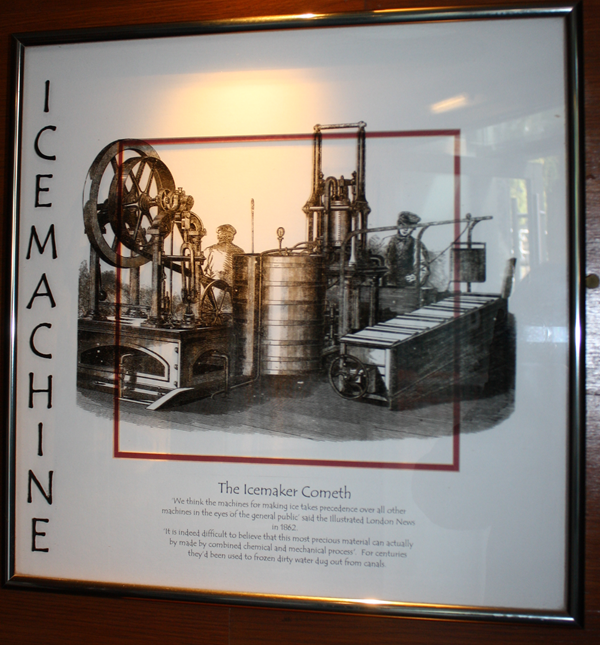
The text reads: ‘We think the machines for making ice takes precedence over all other machines in the eyes of the general public’ said the illustrated London News in 1862.
‘It is indeed difficult to believe that this most precious material can actually be made by combined chemical and mechanical process’. For centuries they’d been used to frozen dirty water dug out from canals.
A framed illustration and text about making ice.
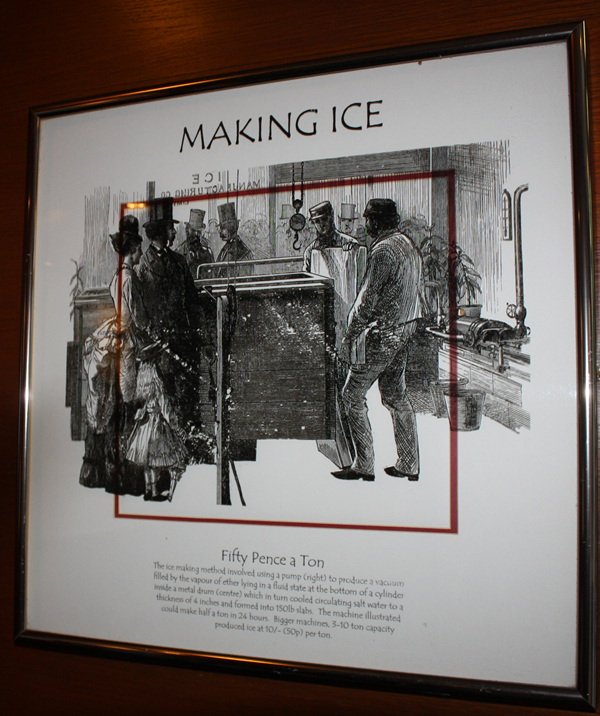
The text reads: The ice making method involved using a pump (right) to produce a vacuum filled by the vapour of ether lying in a fluid state at the bottom of a cylinder inside a metal drum (centre) which in turn cooled circulating salt water to a thickness of 4 inches and formed into 150Ib slabs. The machine illustrated could make half a ton in 24 hours. Bigger machines, 3-10 ton capacity produced ice at 10/-(50p) per ton.
A framed illustration and text about ice-harvesting.
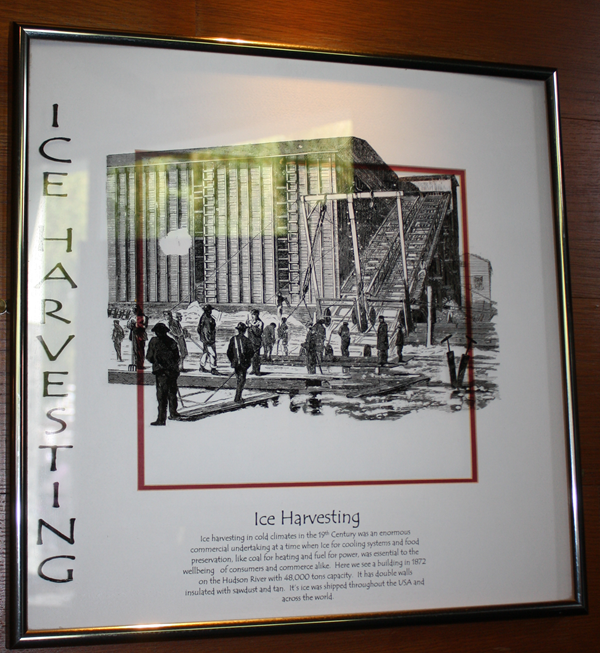
The text reads: Ice harvesting in cold climates in the 19th Century was an enormous commercial undertaking at a time when Ice for cooling systems and food preservation, like coal for heating and fuel for power, was essential to the wellbeing of consumers and commerce alike. Here we see a building in 1872 on the Hudson River with 48,000 tons capacity. It has double walls insulated with sawdust and tan. Its ice was shipped throughout the USA and across the world.
Part of the pub’s large mural, including historical photographs of the local area of Camden.
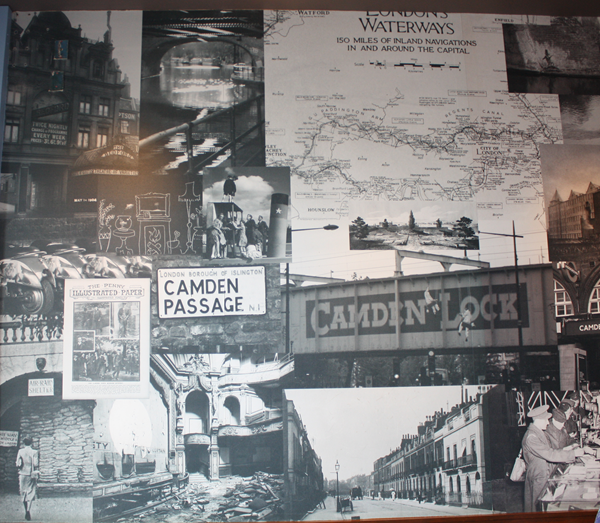
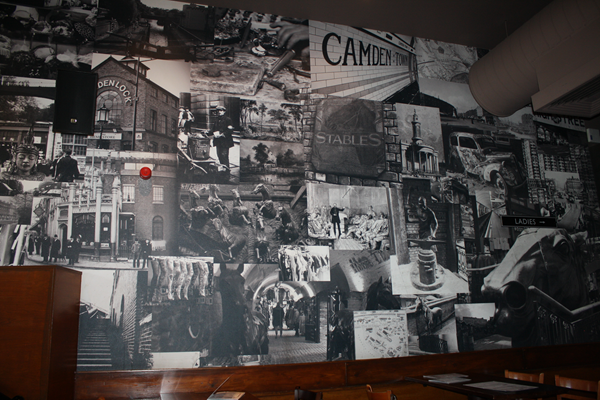
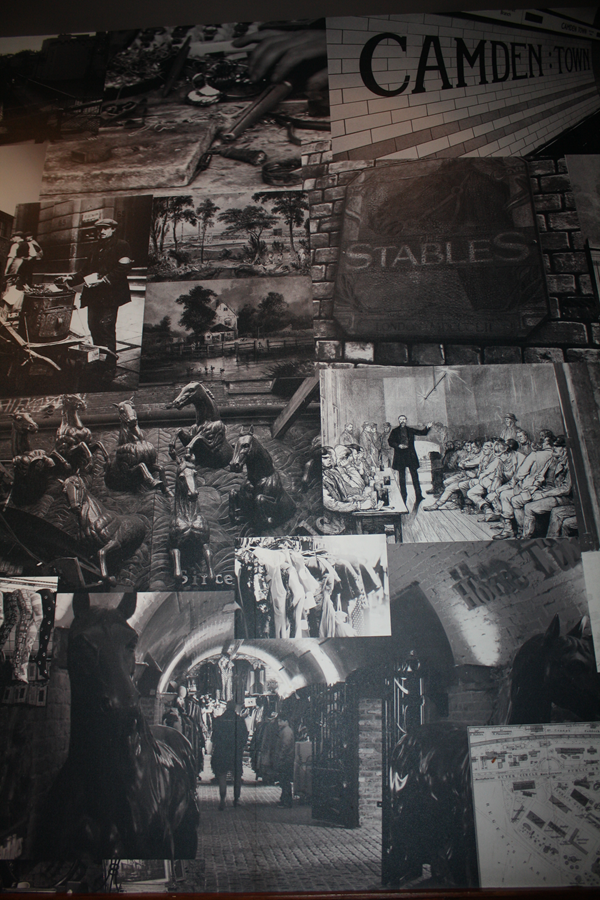
Part of another mural, featuring photographs of Camden High Street.
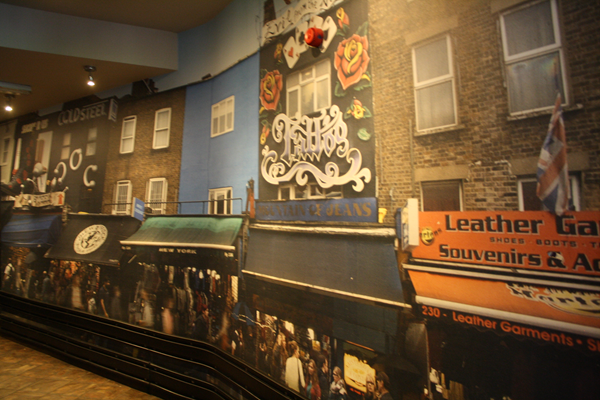
A view of The Ice Wharf, from across Regent’s Canal.
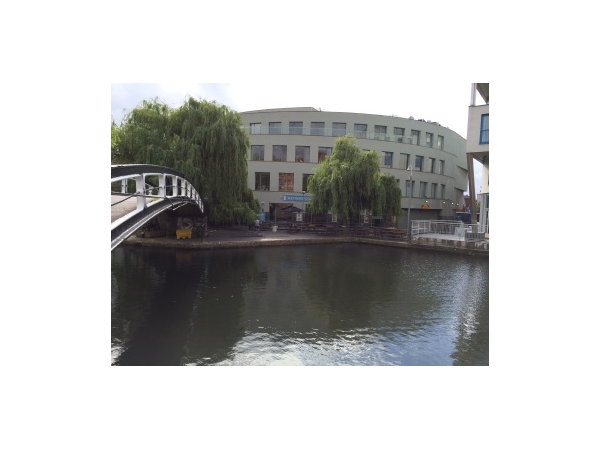
The view from the pub’s outdoor seating area, across Regent’s Canal.
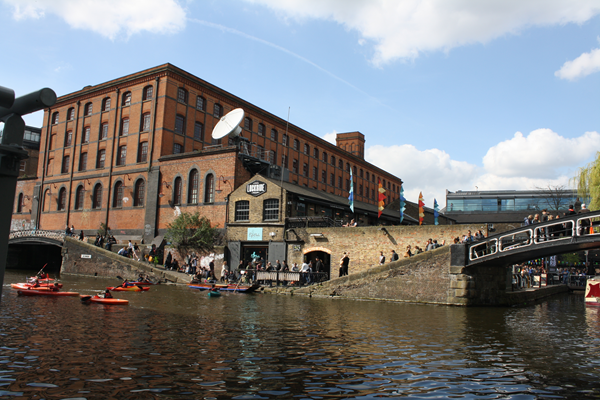
If you have information on the history of this pub, then we’d like you to share it with us. Please e-mail all information to: pubhistories@jdwetherspoon.co.uk